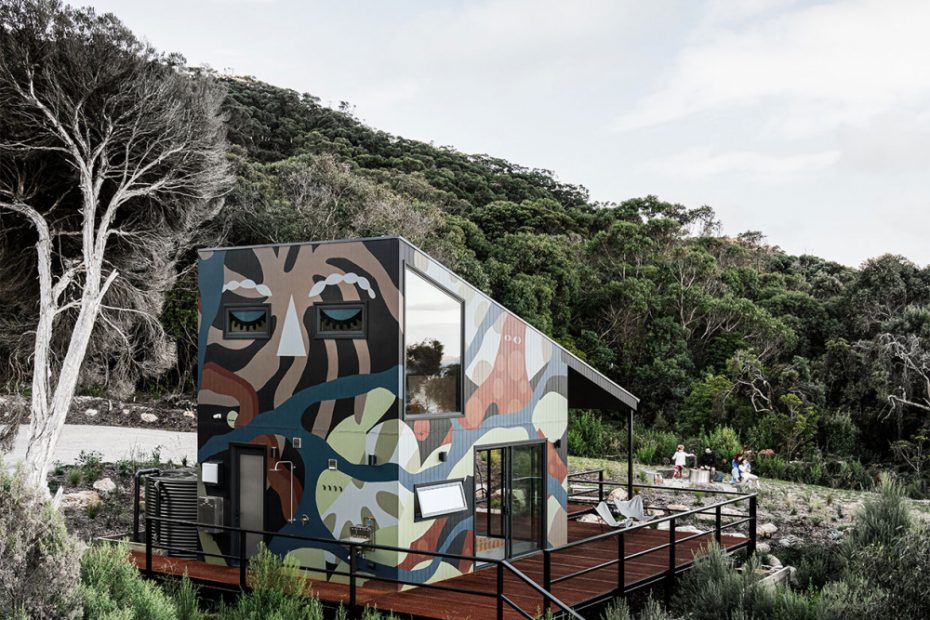5 Reasons To Consider Building A Passive House, With Builder Mark van Haandel
Climate
Magic Beach House is a tiny house accommodation in Walkerville, Victoria built by MVH Constructions. Photography – Marnie Hawson. Styling – Jess Kneebone. Additional styling – Shena Jamieson and Melissa Van Dartel
A look inside the sustainable tiny guest house. Photography – Marnie Hawson. Styling – Jess Kneebone. Additional styling – Shena Jamieson and Melissa Van Dartel
This Surrey Hills home is another example of a beautiful Passive House Mark’s team has worked on with Maxa Design. Photo – Marnie Hawson. Styling – Belle Bright Project
MVH Constructions and architect Imogen Pullar retrofitted this 100-year-old Edwardian to include Passive House principles. Photo – Marnie Hawson. Styling – Belle Hemming
Inside the Preston home. Photo – Marnie Hawson. Styling – Belle Hemming
MVH Constructions founder Mark van Haandel has been a builder for more than two decades, but didn’t know what a Passive House was until about five years ago.
He says learning about the sustainable building standard was like falling down a rabbit hole — in the best way possible.
‘I say to people once you learn about the Passive House principles and the effect that has on the buildings, you never really look at a construction site the same way again,’ Mark says on the latest episode of TDF Talks.
He explains Passive House as being ‘a healthy home’ that runs on low energy and has been designed to suit the exact environment of its location. ‘At the end of the day, you’re going to run on pretty much next to no energy from the grid.’
It’s a voluntary building standard that’s inherently sustainable, but how does it all work?
The key benefits of a Passive House
Passive Houses rely on five core principles: ventilation, thermal bridges, airtight construction, high-performance windows, and continuous insulation. Together, the combination of these features creates an outstanding building envelope that eliminates any cold draughts getting in, and warm air from leaking out.
This in turn means the home requires less energy to heat and cool, which is why Passive Houses are so good at maintaining a comfortable temperature all year round. Certified Passive Houses even undergo a series of strict tests to ensure the building meets these high standards.
Why Passive Houses are ‘healthy’ homes
Mark says in addition to being better for the environment and saving money on energy bills, Passive Houses are ‘healthier’ too. Because the inside of the building is so sealed up so tightly, every Passive House features a mechanical heat recovery ventilation system that acts like ‘the lungs’ of your home. The machine pumps fresh filtered air inside and extracts ‘stale’ or damp air, preventing mould.
‘It keeps the air quality high and the humidity levels at a really optimal level — it helps with attention rates, and even viruses in the house,’ Mark adds. The airtight construction of Passive Houses also stop dust, bugs, or even termites from getting too!
How Passive Houses perform here in Australia
Despite Passive Houses originating in Germany during the 1980s, Mark says it’s becoming ‘a lot more mainstream’ here in Australia. But there’s a common misconception that Passive Houses are only worth building in the northern hemisphere.
‘Every passive house that gets built, is modelled on the climatic data of the area it’s getting built in. So you probably couldn’t get a better representation of what’s required in that street, in that suburb, in that climate zone than a Passive House,’ he explains. The design also takes into careful consideration the placement of windows to maximise natural light, while protecting our homes from the harsh Australian sun. It’s all about protecting your house from extreme temperatures, whether that’s freezing winters or blazing summers.
Why the extra investment is worth it
When Mark explains what Passive House is to clients, they often express confusion that this isn’t the regulatory building standard: ‘They look at me and they say, aren’t all houses built like that? But [Passive House] to some degree is like an insurance policy for your home… that your builder is delivering what you’ve asked for.’ And with the superior thermal efficiency that is embedded into every Passive House, the ongoing energy savings are substantial.
The only downside is that the specialist processes, materials, and trades can be more expensive than a ‘code-built house’, which only takes surface level approach to energy efficiency. They can also take a little longer to construct, but Mark says this can be managed by engaging an architect who is well versed in passive design, or finding a Passive House builder who can help guide the project from the design stage.
It’s easier than you think to find the right team
The Australian Passivhaus Association has a Member Directory you can search, to find builders who specialise in Passive House builds. Mark says you can also find abundant resources online by joining groups on social media, and suggests going to the open days run by the Association to connect with others in the industry.
This episode of TDF Talks is brought to you by Momentum Energy. Listen to the full episode below, or find TDF Talks on Spotify and Apple Podcasts.
